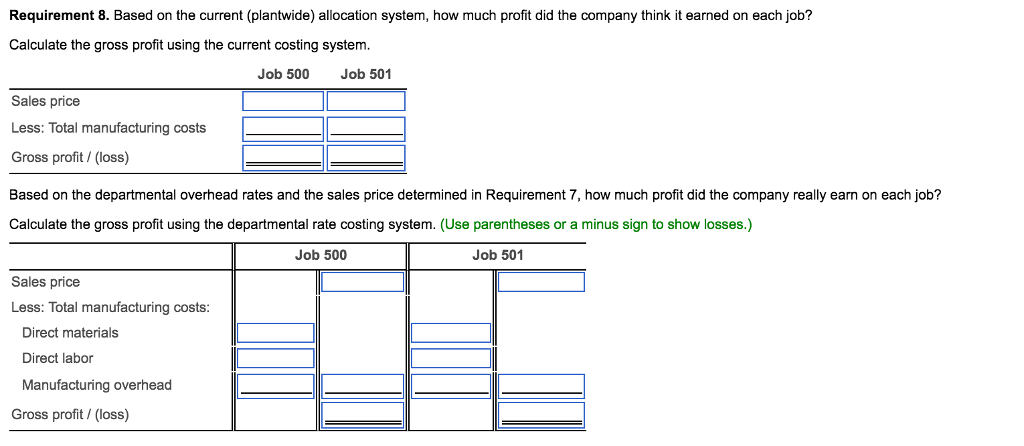Question
I ONLY NEED HELP WITH #5-#9 Southwick Products manufactures its products in two separate departments: Machining and Assembly. Total manufacturing overhead costs for the year
I ONLY NEED HELP WITH #5-#9
Southwick Products manufactures its products in two separate departments: Machining and Assembly. Total manufacturing overhead costs for the year are budgeted at $1,100,000. Of this amount, the Machining Department incurs $680,000 (primarily for machine operation and depreciation) while the Assembly Department incurs $420,000. The company estimates that it will incur 10,000 machine hours (all in the Machining Department) and 22,000 direct labor hours 8,000 in the Machining Department and 14,000 in the Assembly Department) during the year.
Southwick Products currently uses a plantwide overhead rate based on direct labor hours to allocate overhead.However, the company is considering refining its overhead allocation system by using departmental overhead rates. The Machining Department would allocate its overhead using machine hours (MH), but the Assembly Department would allocate its overhead using direct labor (DL) hours. The following chart shows the machine hours (MH) and direct labor (DL) hours incurred by Jobs 500 and 501 in each production department:
| Machining | Assembly | ||
| Department | Department | ||
| Job 500. . . . | 10 | MH | 12 DL hours |
| 5 | DL hours | ||
| Job 501. . . . | 20 | MH | 12 DL hours |
| 5 | DL hours | ||
Both Jobs 500 and 501 used $1,800 of direct materials. Wages and benefits total $30 per direct labor hour.
Southwick Products prices its products at 110% of total manufacturing costs.
Begin by determining the formula, then compute the rate.
| Total manufacturing overhead | / | Total direct labor hours | = | Plantwide overhead rate |
| $1,100,000 | / | 22,000 | = | $50 | per DL hour |
Requirement 2. Compute refined departmental overhead rates.
Determining the formula, then compute the rates. (Round your answers to the nearest dollar.)
| Total departmental overhead cost | / | Total departmental allocation base | = | Departmental overhead rate | ||
| Machining | $680,000 | / | 10,000 | = | $68 | per mach hour | |
| Assembly | $420,000 | / | 14,000 | = | $30 | per DL hour | |
Requirement 3. Which job (Job 500 or Job 501) uses more of the company's resources? Explain.
Job 501 uses more
of the company's resources.
Job 501 uses more
machine hours than the other job. The accounting system should show that one job actually
"costs" the company more resources than
the other.
Requirement 4. Compute the total amount of overhead allocated to each job if the company uses its current plantwide overhead rate.
| Job 500 | Job 501 | |
| Total direct labor hours | 17 | 17 |
| x Plantwide allocation rate | $50 | $50 |
| Overhead allocation | $850 | $850 |



Step by Step Solution
There are 3 Steps involved in it
Step: 1

Get Instant Access to Expert-Tailored Solutions
See step-by-step solutions with expert insights and AI powered tools for academic success
Step: 2

Step: 3

Ace Your Homework with AI
Get the answers you need in no time with our AI-driven, step-by-step assistance
Get Started


